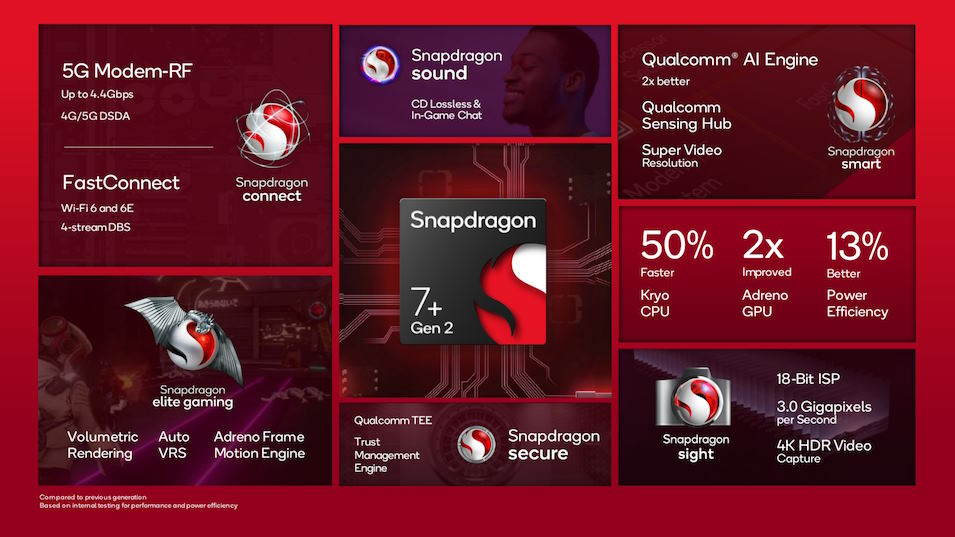Calendar issues aside, the Snapdragon 7+ Gen 2 appears to be a chipsets very interesting, with high performance within its particular space. The CPU has a familiar octa-core smorgasbord design, with four high-efficiency Cortex-A510s and three intermediate Cortex-A710s, all running roughly the same speeds as the previous generation, but now there’s a high-performance Cortex-X2 core. . Clocked at 2.91 GHz, it reportedly improves overall performance by as much as 50% over the Snapdragon 7 Gen 1.
At first we are talking about an amount of power large enough to overlap with that of some flagships, but there is a detail to consider: by only varying the core with the highest performance, maximum performance is only obtained in tasks that require a single thread of processing.
The GPU is also interesting, although perhaps the word “mysterious” is more accurate. Qualcomm has not provided technical information of any kind, although we do know that it uses an Adreno design that doubles the performance of the integrated graphics processing unit in the Snapdragon 7 Gen 1. Despite this huge improvement, far superior to what is expected in the typical generational leap, Qualcomm declares that its new chipsets provides an overall efficiency improvement of 13%.
The rest of the technical characteristics do not vary in a particularly striking way. Repeat support for 3.2GHz LPDDR5 memory and cameras are slightly improved with ISPs supporting slightly higher resolution; up to 200 MP theoretical maximum using a single sensor and 4K60 video with 10-bit color. As for the manufacturing process, it is still at 4 nm, but Qualcomm has migrated to the TSMC process, when it used Samsung’s before.
Qualcomm’s aim is to compete more directly with MediaTek, which is carving out a significant niche among Chinese manufacturers with its chipsets mid-range but with powerful graphics, very Asian taste. Regarding availability, it seems that the first devices are already just around the corner, since the American firm indicates that Redmi and Realme are preparing announcements for this month.











